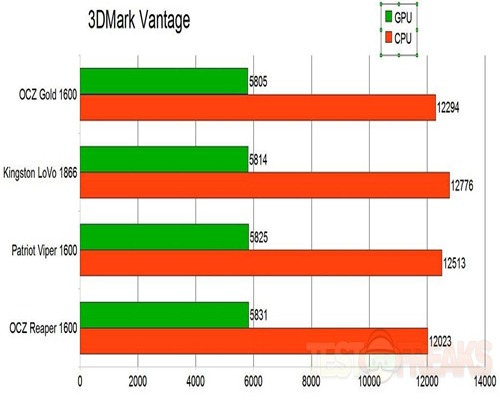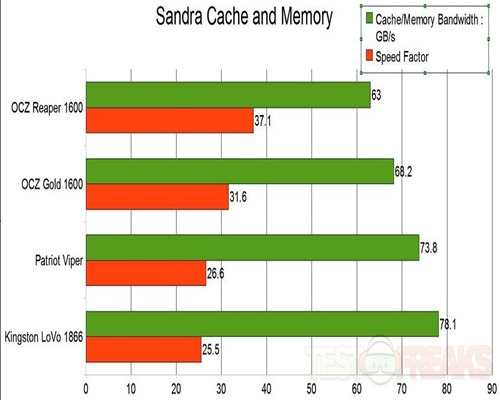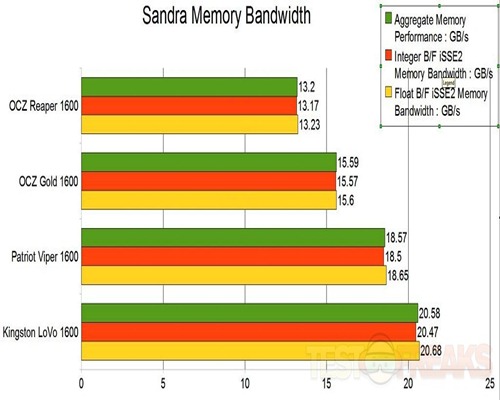Up on the review block today I’ve got another set of DDR3 ram, this time it’s from Patriot and it’s their Viper Xtreme 4gb 1600Mhz kit. I’ve put it up against other 1600Mhz kits and even an 1866 kit as well and it performs very good. The Viper actually outperforms other 1600Mhz kits and comes very close to and even bests the 1866 kit I’ve got. Overall I’m impressed with this ram, it’s some seriously good stuff.
The ram comes in a double style box, cardboard on the outside and plastic inside.
The ram is mostly black with copper accents on the fins.
The ram is labeled with timings of 8-8-8-24 but the patriot website says 8-8-9-24, I guess not much of a difference really.
Specifications:
Corei5 750 CPU and an EVGA P55 motherboard model 132-LF-E655-KR.
When I installed the ram it showed up with timings of 11-11-11-30, so I had to restart and go back into the BIOS and change the settings manually. CPU-Z lists the ram as running at 2T, but it runs at 1T with no problems.
For testing I’m comparing the Patriot Viper to OCZ Reaper HPC 1600Mhz ram with OCZ Gold 1600MHZ 8gb kit and Kingston LoVo 1866Mhz 4gb Kit.
First up how about calculating Pi to 1 million places, lower is better of course.
Times are very close no matter how you look at it.
Next would be 3dMark Vantage.
Things are still very close here.
Next up is Cinebench 10 and 11.5.
Main Processor Performance (CPU)
The test scenario uses all of your system’s processing power to render a photorealistic 3D scene (from the viral “No Keyframes” animation by AixSponza). This scene makes use of various different algorithms to stress all available processor cores.
In fact, CINEBENCH can measure systems with up to 64 processor threads. The test scene contains approximately 2,000 objects containing more than 300,000 total polygons and uses sharp and blurred reflections, area lights and shadows, procedural shaders, antialiasing, and much more. The result is given in points (pts). The higher the number, the faster your processor.
Graphics Card Performance (OpenGL)
This procedure uses a complex 3D scene depicting a car chase (by 
Surprisingly is all of these tests the patriot Viper performs very close to the 1866Mhz Kingston Ram.
Again with the Viper installed it’s close to the 1866Mhz Kingston.
CPU Arithmetic Test:
Results Interpretation : Higher index values are better.
Benchmarks the ALU and FPU processor units
Results Interpretation
Dhrystone (MIPS) – higher results are better, i.e. better integer performance.
Whetstone (MFLOPS) – higher results are better, i.e. better floating-point performance.
Yet again the 1600 is close to the 1866 ram, very good really.
Cache and Memory Test:
Benchmark the processors’ caches and memory access (transfer speed).
Results Interpretation
Cache/Memory Bandwidth (MB/s) – higher results are better, i.e. faster memory bandwidth.
Speed Factor (MB/s) – lower results are better, i.e. less difference between processor cache speed and memory speed.
Same thing here, the 1866 is better but not by much.
CPU Multi-Media Benchmark.
Results Interpretation : Higher index values are better.
Benchmark the (W)MMX(2), SSE(2/3/4), AVX processor units.
Results Interpretation
Multi-Media Integer (Pixels/s) – higher results are better, i.e. better integer performance.
Multi-Media Single/Double Float (Pixels/s) – higher results are better, i.e. better floating-point performance.
And again the Patriot compares well to the faster Kingston ram.
Memory Bandwidth test:
Benchmark the memory bandwidth of your computer
Results Interpretation
Integer Memory Bandwidth (MB/s) – higher results are better, i.e. faster memory bandwidth.
Float Memory Bandwidth (MB/s) – higher results are better, i.e. faster memory bandwidth.
Here the Viper performs better than the other two sets at the same speed.
Memory Latency Test:
Benchmark the latency (response time) of processors’ caches and memory
The latency of caches is measured in processor clocks (i.e. how many clocks it takes for the data to be ready) as it is dependent on the processor clock speed.
The latency of memory is measured in nanoseconds as it is typically independent on processor clock speed.
Results Interpretation:
Latency: Lower is better
Speed Factor: Lower is better
Lower is better here and you can see the Viper performs the best.
I’d say the Patriot Viper ram is some good stuff.
Conclusion:
I’m impressed truly, the Patriot Viper running at 1600Mhz easily compares to the Kingston running at 1866Mhz and bests the other 1600Mhz kits.
The Viper features nice looking and decent heat spreaders but they’re small unlike others out there so the ram should fit fine with most CPU cooler.
Pros:
+Looks great
+Performs very well
+Small heatspreaders
Cons:
-None really
| Grades: | |
| Overall |  |
| Design |  |
| Performance |  |
To learn more about our review policy please visit this page HERE.























